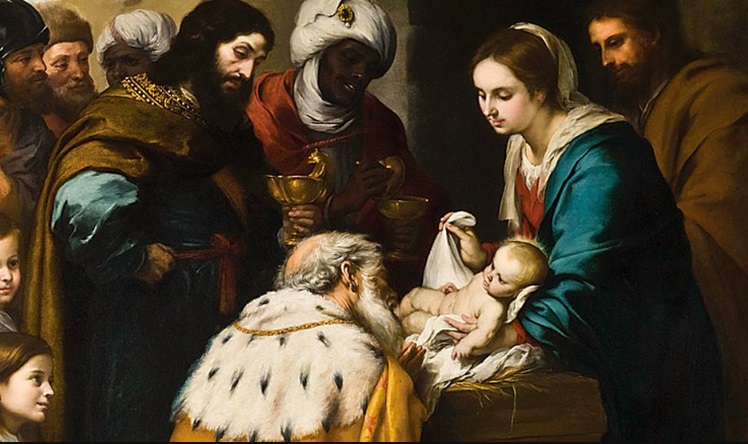Immanuel, God with us
The Gospel for today’s feast, the Feast of the Epiphany, provides an indication of an answer. Its story is about some Magi from the East making their way to do homage to the “infant king of the Jews”. Magi were a priestly caste from Persia dedicated to the interpretation of dreams, especially with regard to the births or deaths of great figures.
Jan 06, 2023

Reflecting on our Sunday Readings with Archbishop Emeritus John Ha
Epiphany of the Lord (A)
Readings: Isaiah 60:1-6;
Ephesians 3:2-3, 5-6;
Gospel: Matthew 2:1-12
Science deals with the concrete physical realities of nature, their interrelationship and the consequences of their interaction. Faith delves into the spiritual world and the invisible realm of the divine. Are these two fields of human experience mutually exclusive or contradictory? Or are they compatible, or even interrelated?
The Gospel for today’s feast, the Feast of the Epiphany, provides an indication of an answer. Its story is about some Magi from the East making their way to do homage to the “infant king of the Jews”. Magi were a priestly caste from Persia dedicated to the interpretation of dreams, especially with regard to the births or deaths of great figures.
The birth in our Gospel was that of the “infant king of the Jews”. The Magi who undertook the search for this infant king followed a star. This piece of information likely indicates their engagement in a study of the movement of stars to corroborate or clarify details about the events interpreted in their dreams. That astral study was a field of science in its own right. But it did not rule out the role of faith. For the Magi, in fact, it did exert an impact on their faith and became a vehicle for them to seek divine revelation. In the Gospel story, the mystery their astral science pointed to concerned the king of the Jews.
When these Magi arrived in Jerusalem, they had to stop as their star had disappeared. They were therefore obliged to seek further information regarding the “infant king of the Jews”. To this end they approached King Herod. It must be noted that Herod was the king of the Jews. Fearing the rise of a potential rival, the king took the matter very seriously. He consulted the chief priests and the scribes “about where the Christ was to be born.” These were Scripture scholars, that is, experts in the study of the Word of God.
The two titles, “king of the Jews” and “Christ”, referred to the same person. The first one was used by the Gentiles represented by the Magi; the Jews used the second one and so Herod used it when addressing the chief priests and scribes.
The answer Herod received was cited as “from the prophet”, meaning from the Scriptures, that is, from the Word of God revealed through His prophets. “Bethlehem, in the land of Judah” was the place of Christ’s birth. The Word of God prophesied that the Christ would be “a leader who would shepherd His people.”
With that revelation, the Magi proceeded on their journey, naturally intending to head for Bethlehem. At this stage, the star reappeared to guide them and “halted over the place where the child was.” The Gospel states: “The sight of the star filled them with delight”, for they felt reaffirmed in their search of the child.
Seeing the child and His mother Mary, they “fell on their knees, did Him homage and offered Him gifts of gold, frankincense and myrrh.” This gesture and these gifts of theirs expressed their acknowledgement of the full identity of “the infant king of the Jews”. For sure, they acknowledged that He was God. That was why they fell on their knees to worship Him. When they met Herod in Jerusalem, they told him that they had come to do homage to the infant king of the Jews. Doing homage with bowing prostration conveyed profound respect for a person of authority who, in the Gospel, was the king of the Jews. But in today’s Gospel, it involved falling on the knees. It amounted to worship and thus acknowledgement of Jesus as God.
Through their astral study and the knowledge received from inspired Scriptures, the Magi came to find and acknowledge the infant Jesus as the king of the Jews and God. Their gifts expressed their faith. Frankincense conveyed their faith in the divinity of the child. Gold reiterated their acknowledgement of Him as king which they had come to know through their science of stars and following the one that guided them. Myrrh, associated with burial, indicated their acknowledgement of the child as a true human person.
From the story in today’s Gospel, it seems clear that science and revelation in the Scriptures worked hand-in-hand to lead the Magi to a knowledge of the infant king of the Jews and further discovery of the place of His birth, as well as His full identity. The Magi’s experience reflects that of many a believing scientist. Their scientific knowledge leads them to acknowledge God’s existence and work in creation. Their faith complements their scientific discovery and brings them to a deeper knowledge of God. The complementarity between science and faith is rooted in the fact that God is the Creator, the source of the entire universe, and He is also the source of all revelation in the Scriptures. He reveals Himself through both science and faith.
Epiphany celebrates the almighty, infinite and invisible God revealing Himself in the powerless, finite and visible baby Jesus. Indeed, the divine Godhead beyond our grasp becomes a human person in Jesus, Whom we can see, touch and relate to. The historical Jesus, Whom science has verified, has led us to the Jesus of faith. Jesus of Nazareth is indeed the Immanuel, God-with-us.
Archbishop Emeritus John Ha is from the Archdiocese of Kuching







Total Comments:0